There are several reasons to make Costa Rica your next travel destination, both for work and for pleasure. Beyond the magnificence of the natural beauty, the friendliness of the Ticos, the amazing food and the extraordinary weather, Costa Rica is a small country characterized by its easygoingness and relative peace.
A country without an army since 1948, Costa Rica is a paradise on Earth, running almost completely on green energy and hosting approximately 5% of the biodiversity of the entire world.
My first visit to Costa Rica was just a glimpse into this diversity. With the cloud forest and tropical beaches, with the indigenous archeological sites and the numerous volcanoes, you’d need a lifetime to discover all the facets of this small country.
While traveling from the capital San José to the Pacific takes you only two hours, and it’s just three hours from the Capital to the Caribbean, Costa Rica has too much to offer and you’ll definitely struggle with any short-term itinerary. All the more reason to visit again. And again.
This introduction to Costa Rica is an invitation to get lost in the nature and the urban environment, offering you important customs and a local’s insight, as well as warning you about the dangers that you might face.
After all, traveling to Costa Rica is an adventure and there is no adventure without risk. So, pack your umbrella and your rain jacket, grab your sandals and your swimsuit and follow me into the exotic and exciting Tiquicia (the name Costa Ricans use for their homeland).
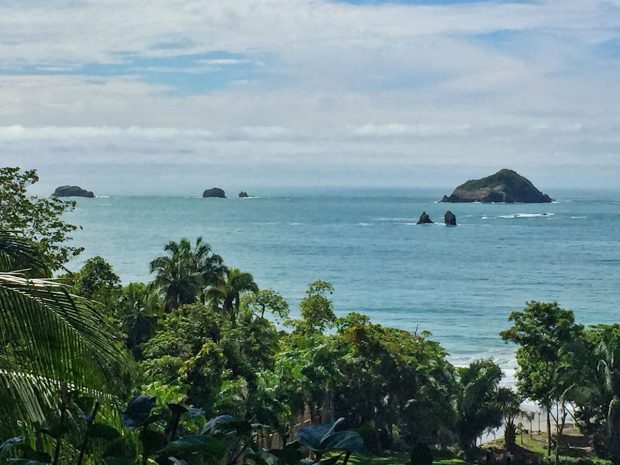
A First Time Visitor’s Guide To Costa Rica
Costa Rica Travel Tips
One of the most important tips for visiting Costa Rica for the first time is to plan in advance. Take a couple of hours before leaving your country and organize your trip, taking into account the country’s geography and allowing time for changes.
If you really plan to stay in the beach for just two days, you might find it hard to leave. You can explore the capital San José, the rainforest, a volcano and a couple of beaches on the same trip. However, the farther you go, the more time you need. Costa Rica’s treasures are hidden everywhere.
While locals are able to speak English, learning a few words in Spanish is helpful. Costa Ricans have their own dialect and sometimes they speak in words with multiple meanings and hilarious puns.
Don’t forget to carry some cash when you’re moving around, but remember that even when Costa Rica is one of the safest countries in Latin America, carrying more money than you need is not really smart.
Same goes for leaving your bags unattended or your camera sitting in the passenger’s seat, but that’s really common sense everywhere, right?
When to Visit
Costa Rica is a great destination year-round. With only two seasons—dry and rainy—the country doesn’t have to worry about too-hot summers, or too-cold winters.
Year-round, you’ll get almost twelve hours of sun every day, and twelve hours of night. The rainy season starts in May and goes until mid-November, and the dry season goes from mid-November to April.
However, the rainy season doesn’t mean less sun, but rather just an almost daily rain starting early each afternoon. No matter when you decide to visit, Costa Rica is well known for its microclimates and unusual changes in weather conditions, so you better be prepared for hot and humid environments, for sunburns and cold nights.
What to Wear
Your best bet is to bring clothes and accessories for every occasion, without making your luggage a living hell. You’ll need beach essentials like sandals, towels, swimsuits and depending on your activities, all that you might need for sunbathing, snorkeling, surfing or walks around the tropical forests.
For most volcanoes and rainforests, including the extraordinary cloud forest in Monteverde, I recommend bringing the opposite: waterproof shoes, jeans, scarves, gloves and winter hats. Don’t forget that Costa Rica also has an interesting urban life and you may need nicer clothes for some restaurants or theaters in San José, as well as short casual clothing for salsa dancing and nights out clubbing.
If you forget something, local stores offer cheap options to buy the essentials, while markets sell local crafts and clothing souvenirs (t-shirts).
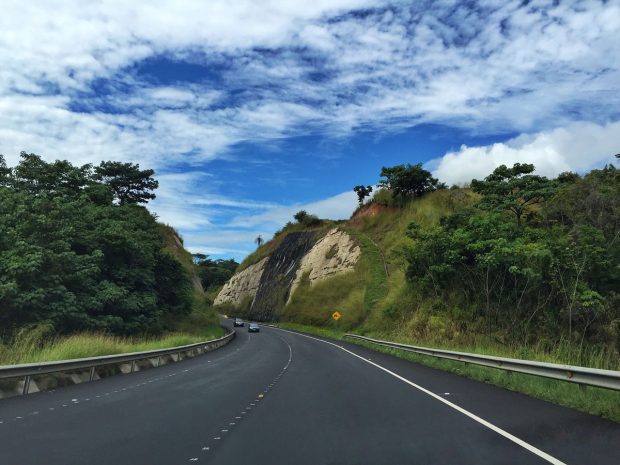
Getting Around
Costa Rica has a really complicated geography. That’s partly why you have all these natural beautiful landscapes and breathtaking panoramas. However, moving around is not necessarily terrible, but it can be. For those traveling on a budget, you have to rely on local buses for both short and long distances, while taxis are a great option only for short trips or for late-night adventures.
Buses are a common mode of transport through the provinces of Costa Rica–Cartago, Heredia and Alajuela–with some regularity. For trips to the beaches and the rainforests, some buses are available every day, depending on the destination.
The two famous volcanoes, Irazú and Poás, have their own direct bus from San José. A small train also moves you around San José downtown and it connects with some of the neighboring provinces, but frequent small accidents make the train unreliable.
Renting a car is a great and cheap option for exploring the country. While it’s more expensive than taking a bus, it offers you the possibility to stop along the way for roadside meals (look for a local soda—that’s the word for small restaurants).
With your own rental car, you’ll find Costa Rica’s natural beauty more easily accessible. Roadside restaurants, sodas, sometimes have fantastic views, or you can access less easily-reachable beaches. While some roads are problematic due to neglect and maintenance, the country’s major highways are in great condition.
Just be warned that—mostly during the rainy season—floods and landslides are a real problem, causing delays and sometimes even blocking entire roads. Make sure you have data on your phone or access to a GPS when renting a car.
Where to Visit in Costa Rica for the First Time: San José and the GAM
San José is the capital of Costa Rica and the GAM (the Great Metropolitan Area) which includes Cartago, Alajuela and Heredia. It’s the center of Costa Rica’s urban life.
There are several things to do in the center of the country and you can spend some days wondering around these small cities, discovering the daily life of Ticos.
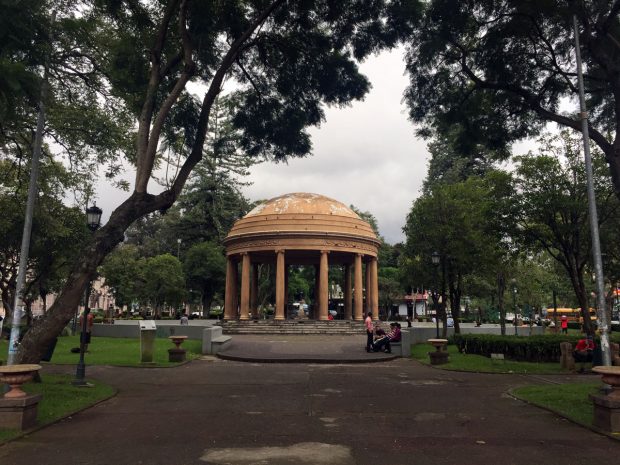
Things To Do in San José
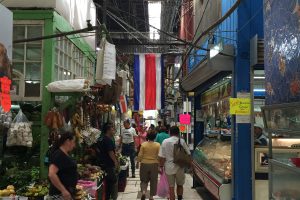 Mercado Central – The central market in San José is a cultural institution. Locals visit for lunch or to buy groceries and flowers. It’s also a great place for souvenir hunting (this is where you can get your Costa Rican coffee or other bric-a-brac). Make sure to try the sorbet ice cream at Helados De Sorbetera. Costa Ricans have a sweet tooth and this is a local favorite for many.
Mercado Central – The central market in San José is a cultural institution. Locals visit for lunch or to buy groceries and flowers. It’s also a great place for souvenir hunting (this is where you can get your Costa Rican coffee or other bric-a-brac). Make sure to try the sorbet ice cream at Helados De Sorbetera. Costa Ricans have a sweet tooth and this is a local favorite for many. Teatro Nacional – As a visionary project started by Costa Rican President José Joaquín Rodríguez, the National Theater was inaugurated in 1897 and is a jewel in the middle of the capital, offering theater, dance and other performances. A sculpture garden and coffee shop are open to the public every day.
Teatro Nacional – As a visionary project started by Costa Rican President José Joaquín Rodríguez, the National Theater was inaugurated in 1897 and is a jewel in the middle of the capital, offering theater, dance and other performances. A sculpture garden and coffee shop are open to the public every day.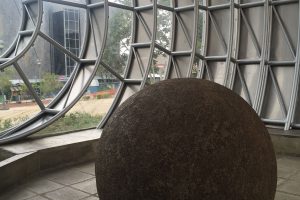 Museum Nacional – With an original indigenous sphere located in the entrance of the building, the National Museum tells the story of Costa Rica through its’ archeological art, crafts and excavations. The building used to be a military fortress and now includes a butterfly sanctuary—a nice attraction for children.
Museum Nacional – With an original indigenous sphere located in the entrance of the building, the National Museum tells the story of Costa Rica through its’ archeological art, crafts and excavations. The building used to be a military fortress and now includes a butterfly sanctuary—a nice attraction for children. TEOR/Ética – This small art gallery located in Barrio Amón has become a celebrated art institution in Central America. With its’ aim to highlight political and social messages, the gallery offers great contemporary art every day—for free! TEOR/Ética is a must for lovers of modern and contemporary art. They often showcase new and emerging artists alongside established contemporary ones.
TEOR/Ética – This small art gallery located in Barrio Amón has become a celebrated art institution in Central America. With its’ aim to highlight political and social messages, the gallery offers great contemporary art every day—for free! TEOR/Ética is a must for lovers of modern and contemporary art. They often showcase new and emerging artists alongside established contemporary ones.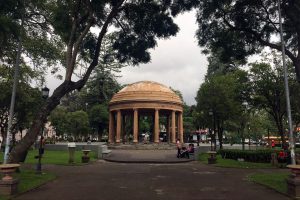 Parque Morazán – A small park located a couple of blocks from the National Theater, it’s the home to the Templo de la Música, a popular pavilion frequently visited by street musicians, jugglers and other buskers. The park is also the venue of several artistic festivals throughout the year and it’s a popular hangout for locals.
Parque Morazán – A small park located a couple of blocks from the National Theater, it’s the home to the Templo de la Música, a popular pavilion frequently visited by street musicians, jugglers and other buskers. The park is also the venue of several artistic festivals throughout the year and it’s a popular hangout for locals.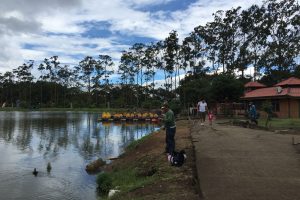 La Sabana – Considered “el pulmón de San José,” (the lung of San José), the Sabana park is a huge open space in the center of the city with green areas, lakes and sport venues. Inside the park, the recently renovated National Stadium hosts both soccer matches and international concerts.
La Sabana – Considered “el pulmón de San José,” (the lung of San José), the Sabana park is a huge open space in the center of the city with green areas, lakes and sport venues. Inside the park, the recently renovated National Stadium hosts both soccer matches and international concerts.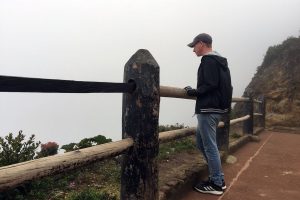 Day Trip to Poás Volcano – One of the more easily accessible volcanos in Costa Rica is just a short 2-hour drive from San José. Many tour operators run daily tours (either half-day or full-day) from the city center to the volcano, along with stops to the La Paz waterfall and nearby nature parks. It’s also to get to with a rental car, but make sure you set out early—by 10 a.m., often the volcano crater is difficult to see due to fog.
Day Trip to Poás Volcano – One of the more easily accessible volcanos in Costa Rica is just a short 2-hour drive from San José. Many tour operators run daily tours (either half-day or full-day) from the city center to the volcano, along with stops to the La Paz waterfall and nearby nature parks. It’s also to get to with a rental car, but make sure you set out early—by 10 a.m., often the volcano crater is difficult to see due to fog.
Things To Do in Cartago, Alajuela and Heredia
The other three provinces of the GAM offer great options for day trips—easily visited by jumping on a bus from San José downtown. Cartago is famous because of its cathedral: the Basilica of Our Lady of the Angels, dedicated to the Virgen de Los Angeles.
Locals believe that the virgin appeared in a stone and the temple was erected on the very same site. Another attraction is the temple locally known as Las Ruinas (The Ruins), a church that was destroyed in a major earthquake in 1910.
Alajuela, the province closest to the San José international airport, hosts the story of Costa Rica’s war heroe Juan Santamaría (whom the airport is named after). The city includes a sculpture and museum dedicated to this chapter of Costa Rican history: Museo Histórico Cultural Juan Santamaría.
Heredia, locally known as the “city of flowers,” is a small town with a lot of cultural attractions, including the famous Barva with its volcano and the tradition of mascaradas (street parties with live music and giant dancing dolls).
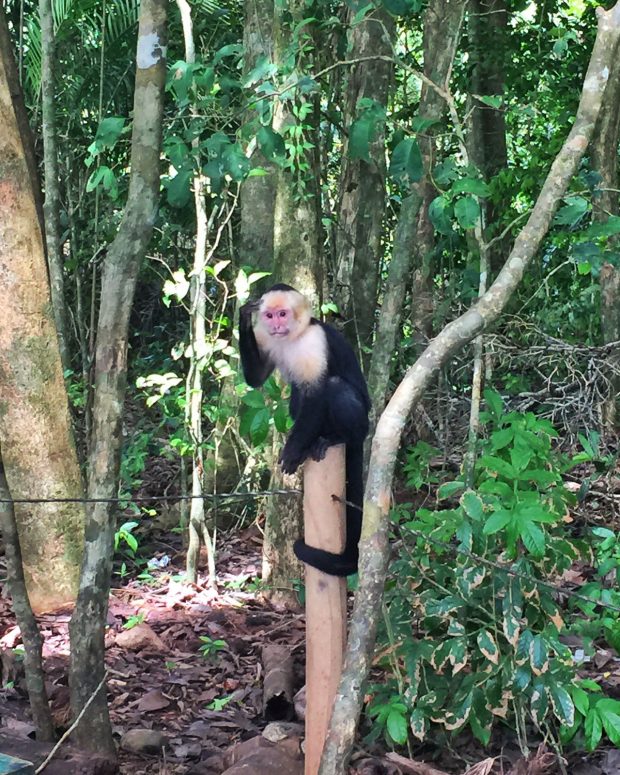
Where to Visit: Central Pacific Coast
This first time visitor’s guide to Costa Rica explores the best places in the Central Pacific Coast. From the gay-friendly Manuel Antonio to the port town of Quepos and the touristic hotspot Jacó, the Central Pacific Coast is a great introduction to Costa Rica’s natural beauty.
Things To Do in the Central Pacific Coast
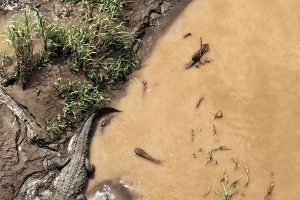 Tarcoles River – Located in the Costanera Sur, this small bridge is an obligatory stop for both locals and foreigners. Take care while walking this tiny sidewalk alongside the bridge and look down to discover the beautiful yet horrific view of dozens of crocodiles waiting peacefully in the waters of the Tarcoles River. You can get really great pictures with your camera from above and the roadside cafés sell fresh juices and smoothies (even if overpriced). It’s one of those perfect stops during a road trip.
Tarcoles River – Located in the Costanera Sur, this small bridge is an obligatory stop for both locals and foreigners. Take care while walking this tiny sidewalk alongside the bridge and look down to discover the beautiful yet horrific view of dozens of crocodiles waiting peacefully in the waters of the Tarcoles River. You can get really great pictures with your camera from above and the roadside cafés sell fresh juices and smoothies (even if overpriced). It’s one of those perfect stops during a road trip. Jacó Beach – Notorious for drugs and crime, Jacó Beach is an interesting town on the Central Pacific coast. It’s small, but is home to a nice beach, a couple of restaurants and countless souvenir stores.
Jacó Beach – Notorious for drugs and crime, Jacó Beach is an interesting town on the Central Pacific coast. It’s small, but is home to a nice beach, a couple of restaurants and countless souvenir stores. Quepos – The port city of Quepos is a small village with a few local sodas, bars and restaurants. The city recently opened the La Marina Pez Vela, a club and shopping mall for local fishermen and boat owners. Open to the public year-round, the marina has great restaurants, bars and ice cream cafés. It’s a great local spot for a sundowner as opposed to the hillside bars on the road to Manuel Antonio.
Quepos – The port city of Quepos is a small village with a few local sodas, bars and restaurants. The city recently opened the La Marina Pez Vela, a club and shopping mall for local fishermen and boat owners. Open to the public year-round, the marina has great restaurants, bars and ice cream cafés. It’s a great local spot for a sundowner as opposed to the hillside bars on the road to Manuel Antonio.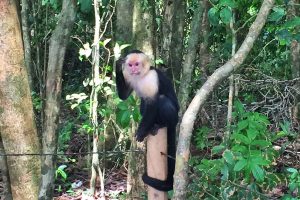 Manuel Antonio – One of Costa Rica’s best beaches and a favorite for LGBT visitors, Manuel Antonio is located alongside a hill with incredible panoramic views out to sea. The short 15-minute drive from Quepos to Manuel Antonio is dotted with a number of trendy restaurants and bars. In Manuel Antonio’s city center you’ll find the entrance to Costa Rica’s most popular national park—where you’re guaranteed to see monkeys and raccoons. The national park has a lot of sloths, but note that they’re sometimes difficult to spot if they’re hiding up in the trees all day. The national park also includes wonderfully peaceful beaches and a panoramic viewpoint (mirador) out to the Pacific Ocean.
Manuel Antonio – One of Costa Rica’s best beaches and a favorite for LGBT visitors, Manuel Antonio is located alongside a hill with incredible panoramic views out to sea. The short 15-minute drive from Quepos to Manuel Antonio is dotted with a number of trendy restaurants and bars. In Manuel Antonio’s city center you’ll find the entrance to Costa Rica’s most popular national park—where you’re guaranteed to see monkeys and raccoons. The national park has a lot of sloths, but note that they’re sometimes difficult to spot if they’re hiding up in the trees all day. The national park also includes wonderfully peaceful beaches and a panoramic viewpoint (mirador) out to the Pacific Ocean.- Puntarenas – This small town is famous for the Churchill, a dessert made of sugar and more sugar and completely unhealthy, but loved by everyone. The Malecón in Puntarenas is a small area for walking along the beach. While the town is often mocked by locals as the destination of low-income Costa Ricans, the town has budget restaurants, stands for street food and local bars for a cold beer.
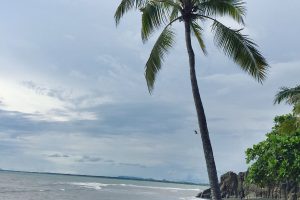 Playa de Doña Ana – Located only 10 kilometers away from Puntarenas, this small, hidden beach with black sand and strong waves is a great stop for sunbathing and for swimming. The beach has an entry fee (like most of Costa Rica’s national parks) but some services are available, including parking, a restaurant and grills for your own use.
Playa de Doña Ana – Located only 10 kilometers away from Puntarenas, this small, hidden beach with black sand and strong waves is a great stop for sunbathing and for swimming. The beach has an entry fee (like most of Costa Rica’s national parks) but some services are available, including parking, a restaurant and grills for your own use.
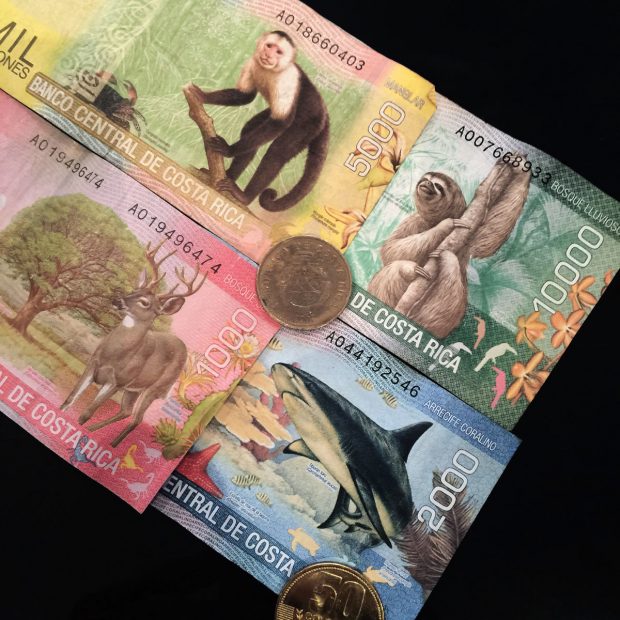
Important Things to Take into Account
While Costa Rica is a safe country, you’ll have to take some precautions to have a great holiday. The local emergency number for both medical emergencies and the police is 911.
Follow the signs: There are lots of signs on the beaches and natural parks warning you of potential dangers, so don’t be an idiot. If the local authorities designated an area as a no swimming or crocodile zone, don’t take the risk. That video of you being eaten by some weird animal is not worth the likes.
Sunscreen and water: Yes, you need lots of sunscreen—even when visiting San José downtown. Costa Rica is a tropical paradise but that does not mean your skin and your body are invincible. You need to keep your skin protected and your body hydrated. Enjoy the dozens of options for local juices and beverages, and use a hat to protect your neck. Seriously, you don’t want to look like a lobster after your holiday.
Keep the mosquitoes away: Protect yourself from dengue fever and the newest addition of threats, the zika virus. Costa Rica has a strong and active organization who constantly work on removing the places where mosquitoes reproduce, but repellent is your best bet for safety.
If you feel symptoms of a really bad flu, better double check with your doctor for up to two weeks after your trip. Better be safe than sorry and just use repellent.
Drive like a local: Traffic laws in Costa Rica, I’m sure exist, but somehow there’s still a certain amount of creativity applied. Sometimes it’s maybe safer to follow the standards set by the other drivers on the road.
Stay alert when driving and aware of your surroundings, and you should be fine. Many of the car rental companies in San José are less-than-reputable (even the international rental car chains) and they’ll often argue even tiny scratches on the car upon return, so be vigilant to return your rental car in as best condition you can.
Watch your belongings: Violent robberies and assaults have diminished in Costa Rica, but some people are affected by pickpocketing and other thefts.
San José downtown is safe during the day, but some streets are dangerous at night (such as around the bus station) and even locals prefer to rely on taxi drivers than taking their chance. Phone apps like EasyTaxi are popular among locals.
Carry cash: While credit and debit cards are universally accepted, some places work in the old-fashioned way. Street vendors and other small payments are frequently done in cash.
Use a paper map: Internet access and WiFi are easy to find, but the service is not available throughout the entire country, considering both geographical and weather conditions.
Before you find yourself completely lost in the middle of nowhere, carry a paper map and keep it handy—especially when visiting national parks or coastal areas.
Read the local news: The Tico Times is Costa Rica’s most well-established English news source. You’ll find helpful articles about recent events and news from Costa Rica, including special features with useful tips for visitors.
Need more help planning your first trip to Costa Rica? Check out the official Costa Rica tourism website at visitcostarica.com. Read more Costa Rica travel stories here on TravelsofAdam.com.

Ahh yes, Costa Rica. My very first “solo” trip years back. Went there for a summer to study Spanish. Great time! The only thing I recommend is avoiding going in May or June as it is rainy season and it will rain a few times a day.
You can fly there super cheap from the US right now as well while the US dollar is strong.
Nice blog and providing very useful information…….